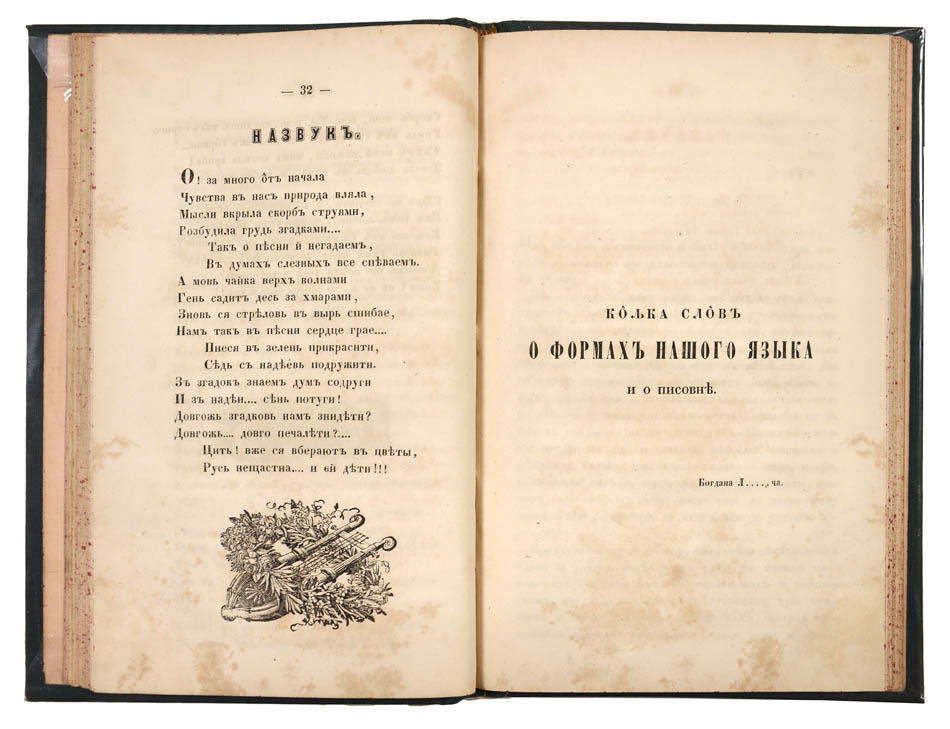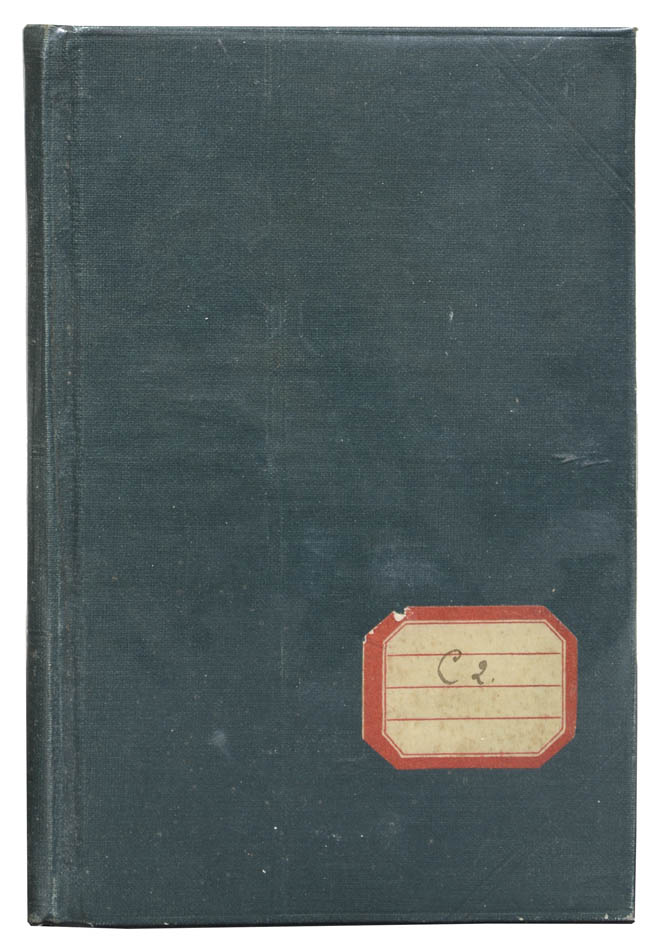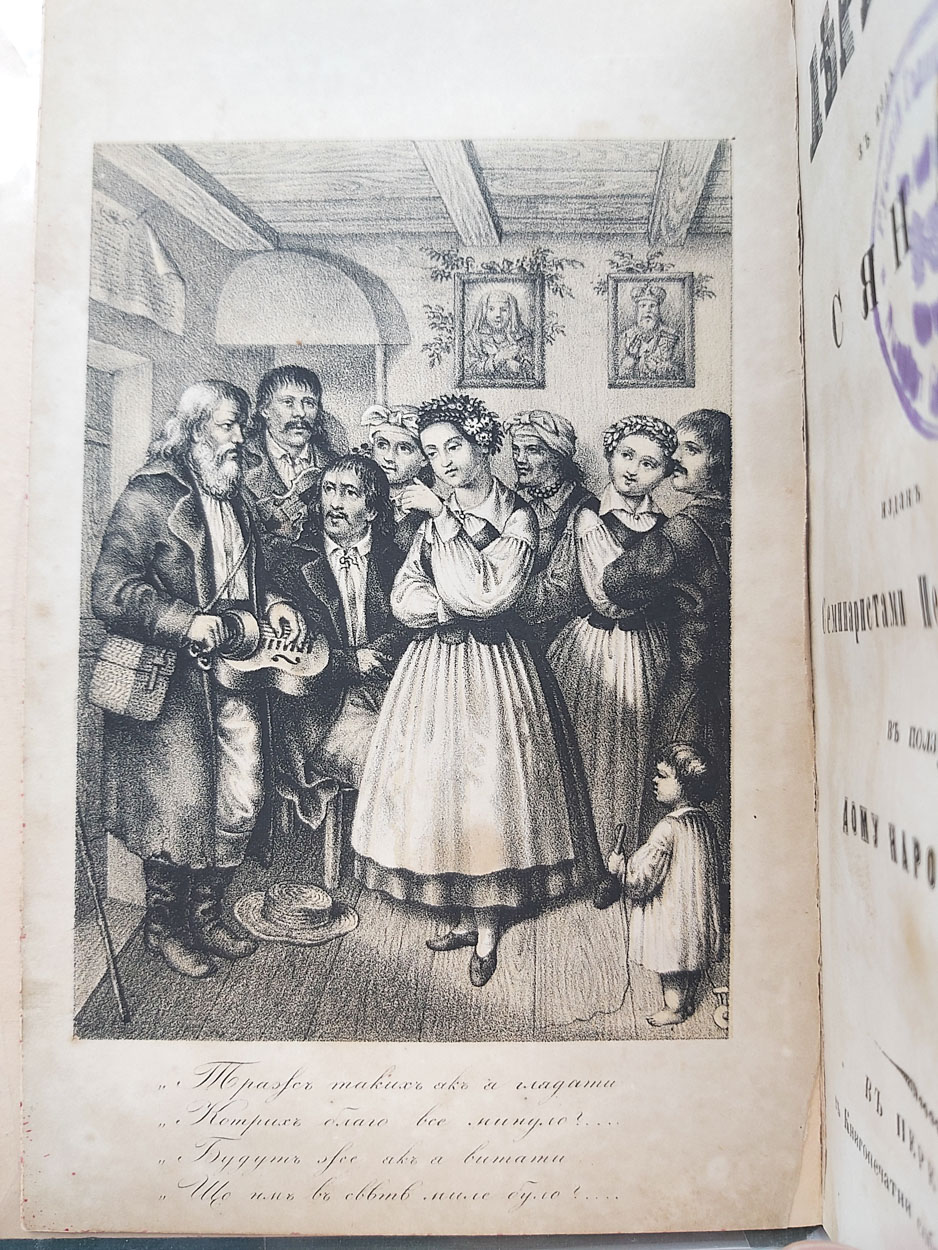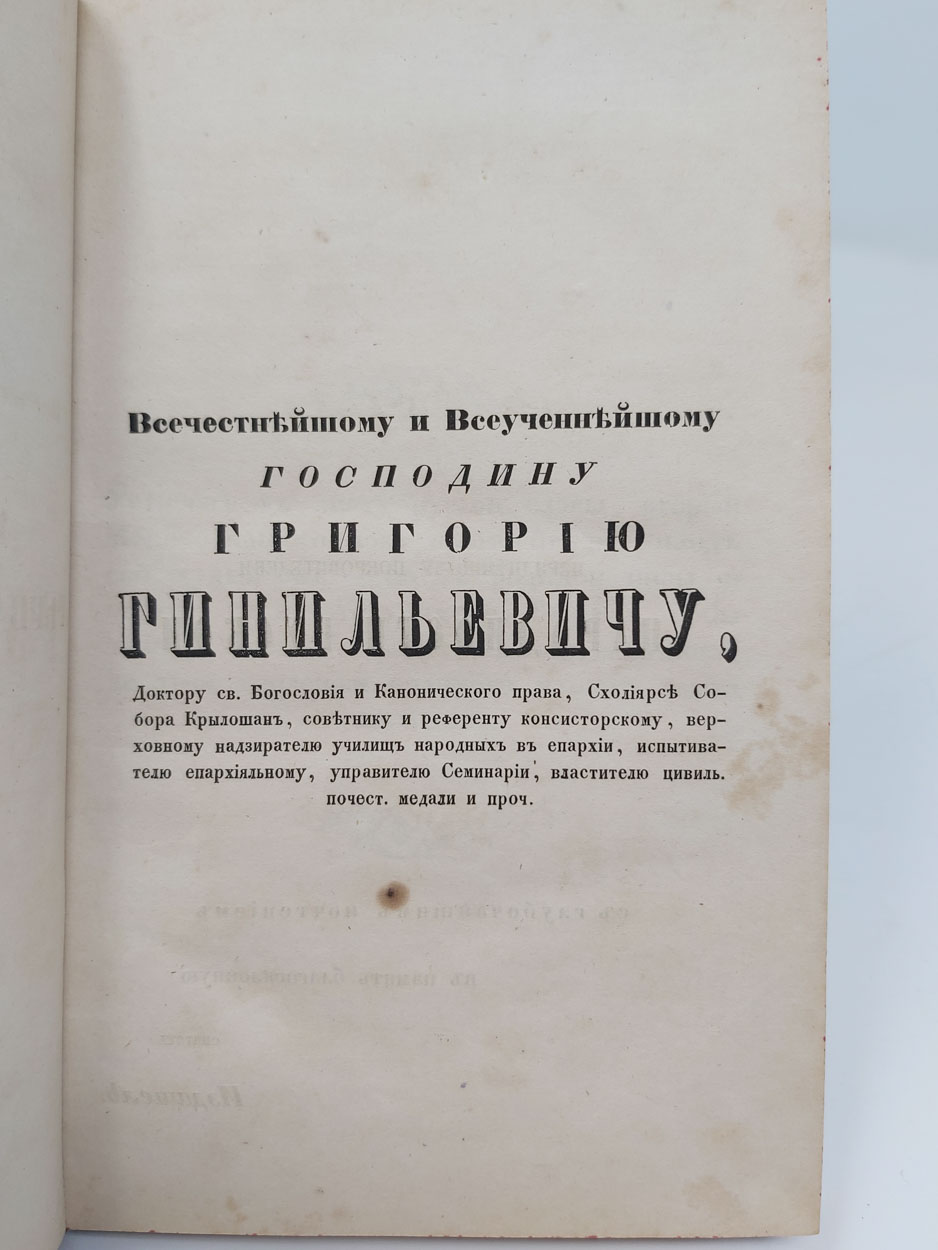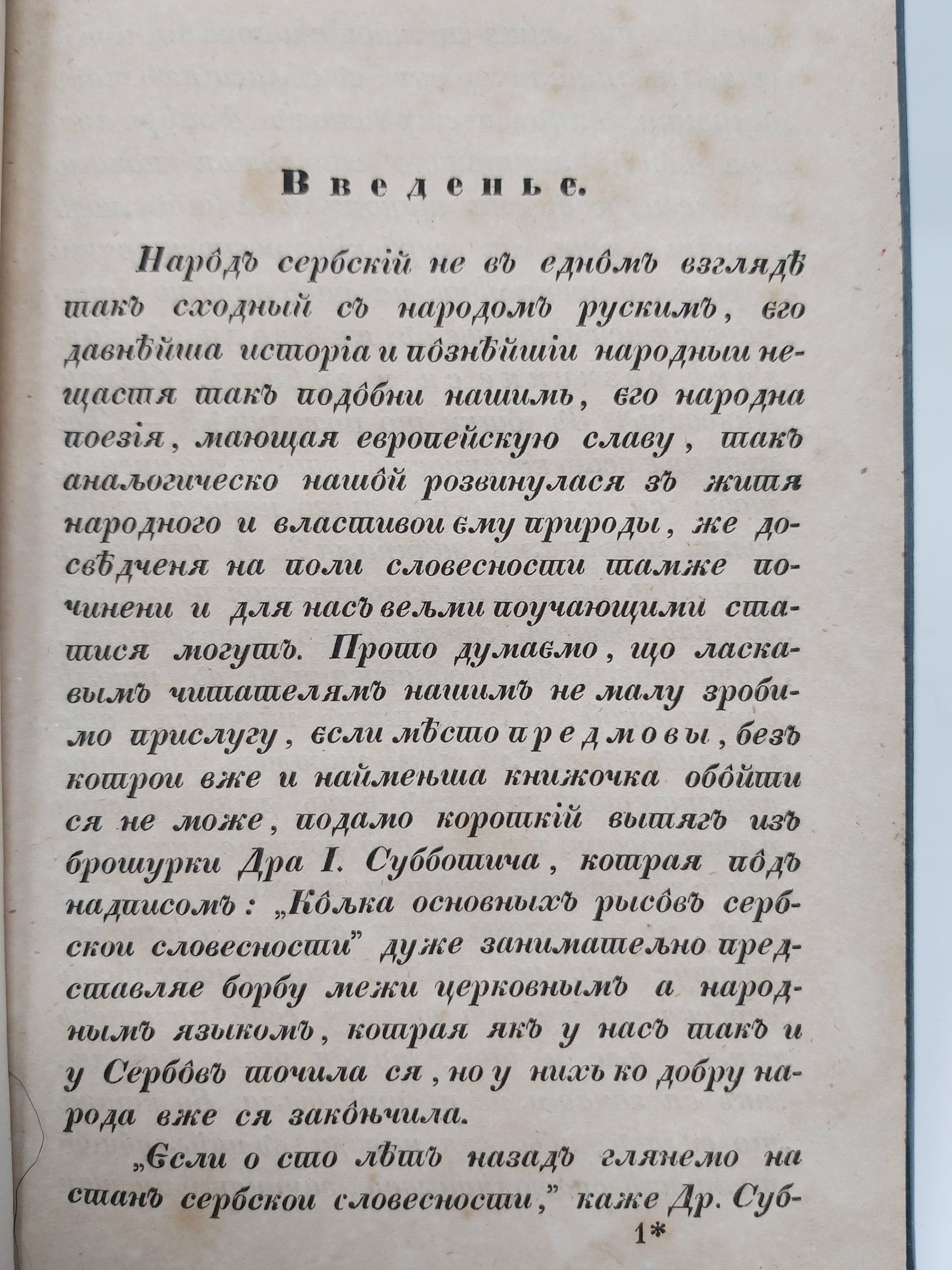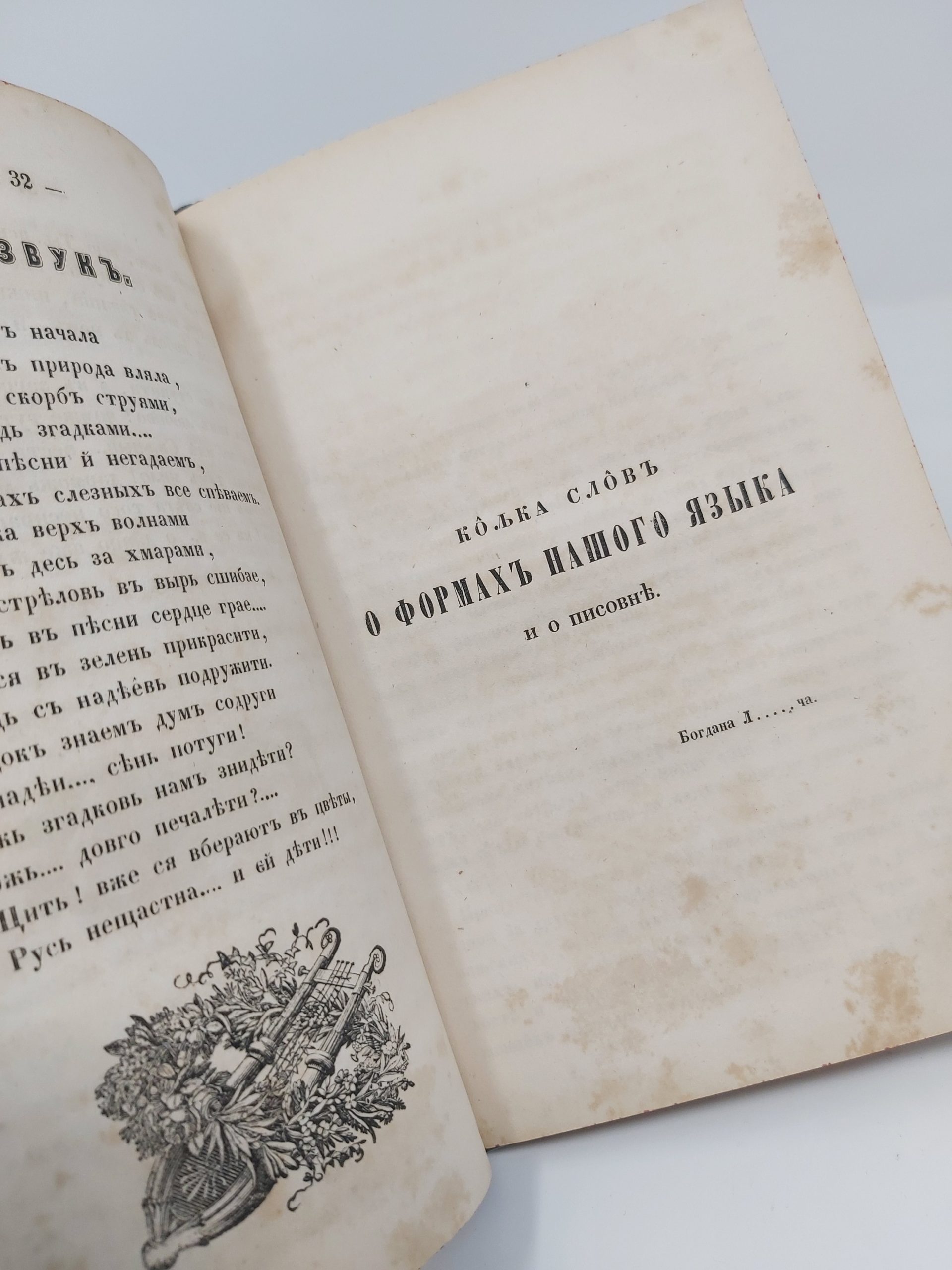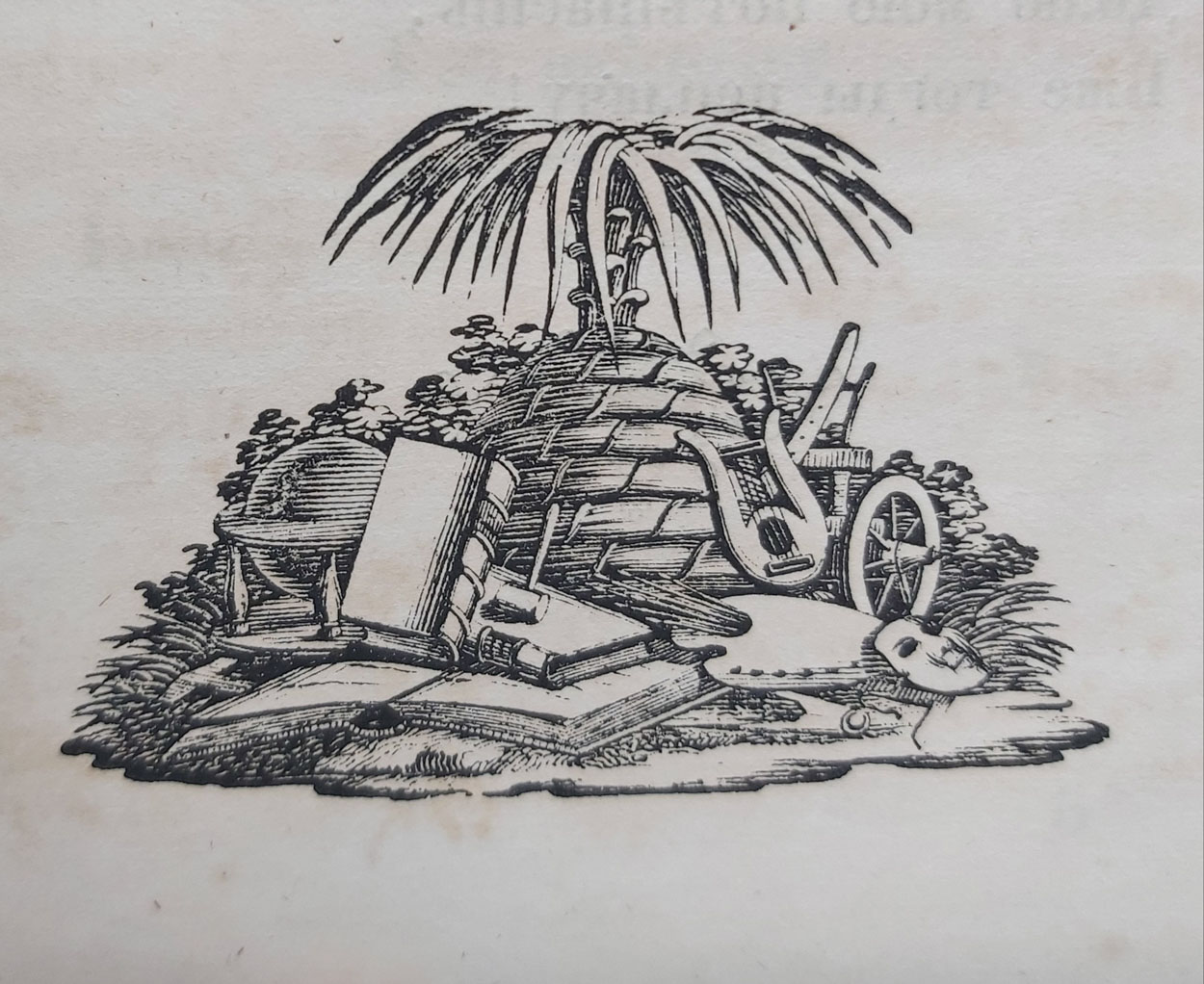Our Notes & References
A very rare and attractive literary almanac that bears witness to the early attempts of Galician intelligentsia to define their national identity and develop their own literary language.
This almanac was published thanks to the efforts of Russophiles of Galicia, at the dawn of a cultural and political movement. Being part of the wider Pan-Slavism that was developing in the late 19th century, it emphasised that since the Eastern Slavic people of Galicia were descendants of the people of Kiev Rus’, and followers of Eastern Christianity, they were thus a branch of the Russian people. Russophilia was mostly a reaction against Polish (in Galicia) and Hungarian (in Carpathian Ruthenia) cultural suppression that was largely associated with Roman Catholicism.
After the Partition of Poland in 1772, Galicia became part of Austria. By that time the Russian nobility, higher clergy and merchants were rather assimilated to Polish culture, and a local language was only used by peasantry and craftsmen in domestic life. The Austrian rulers (Maria Theresa and Josef II) brought some positive changes when, in the region with no higher education institutions, they founded a theological seminary and University in Lvov. A certain number of places were also reserved for Galician students at the Vienna Theological seminary.
With access to education and on the general wave of Pan-Slavism, secret societies started to form in Lvov propagating national culture and literature. In 1836 a first publication appeared, the almanac “Rusalka Dnestrovaia”, which was the first to use Ukrainian phonetic writing and an adapted alphabet. Despite its innocent content, the almanac was confiscated and the members of the publication circle jailed.
The 1848 revolution in the Austrian Empire brought to Galicia the abolition of serfdom and more freedom generally. That same year, the first Galician newspaper in Russian started to be published. With restrictions on freedom of expression suddenly weakened, the Galician cultural activists were put in a difficult position: having been communicating in Polish most of their life, they now were struggling with the Russian literary language. Lervak shows a third way: with poems, stories and articles written by local authors, it represents an attempt to develop their own unified literary language, which they saw as a basis for national identity: the remarkable introduction explains these aims at length, taking in particular the Serbian people and language as example and model. “Darkness of the sky of our literature can only be brightened by two stars: publication of a Ukrainian dictionary and a collection of folk songs. But woe to us if these two stars will never rise.” (Introduction by Leontovich, p. X).
Beyond this manifesto, the work comprises extensive poems by Konstantin Antonii, an important contribution on the Galician language, and poems and a short story by Leontovich. It shows also lovely illustrations: head- and tail-pieces, as well as an attractive lithographed frontispiece.
From today’s perspective, the language used in the almanac is a mix of modern Russian, Ukrainian and Polish, making this publication extremely important both from philological and historical points of view.
Of great rarity: we could trace only three copies of this title in the Western libraries: only one in the US (Urbana-Ch.) and two in Europe (Royal library in Denmark and National library of Poland).
Provenance
Russian Galician Club, New York (stamps on title and several pages dated 1915).
Physical Description
Octavo (18.9 x 13 cm). Lith. frontispiece, title, half-title, [4], X, 110 pp., with many head- and tail-pieces.
Binding
Later (early 20th-c.?) green cloth, paper label pasted on upper cover, speckled edges.
Condition
Some foxing or browning throughout, occasional staining, frontispiece splitting in gutter; overall in very good condition though, crisp.


